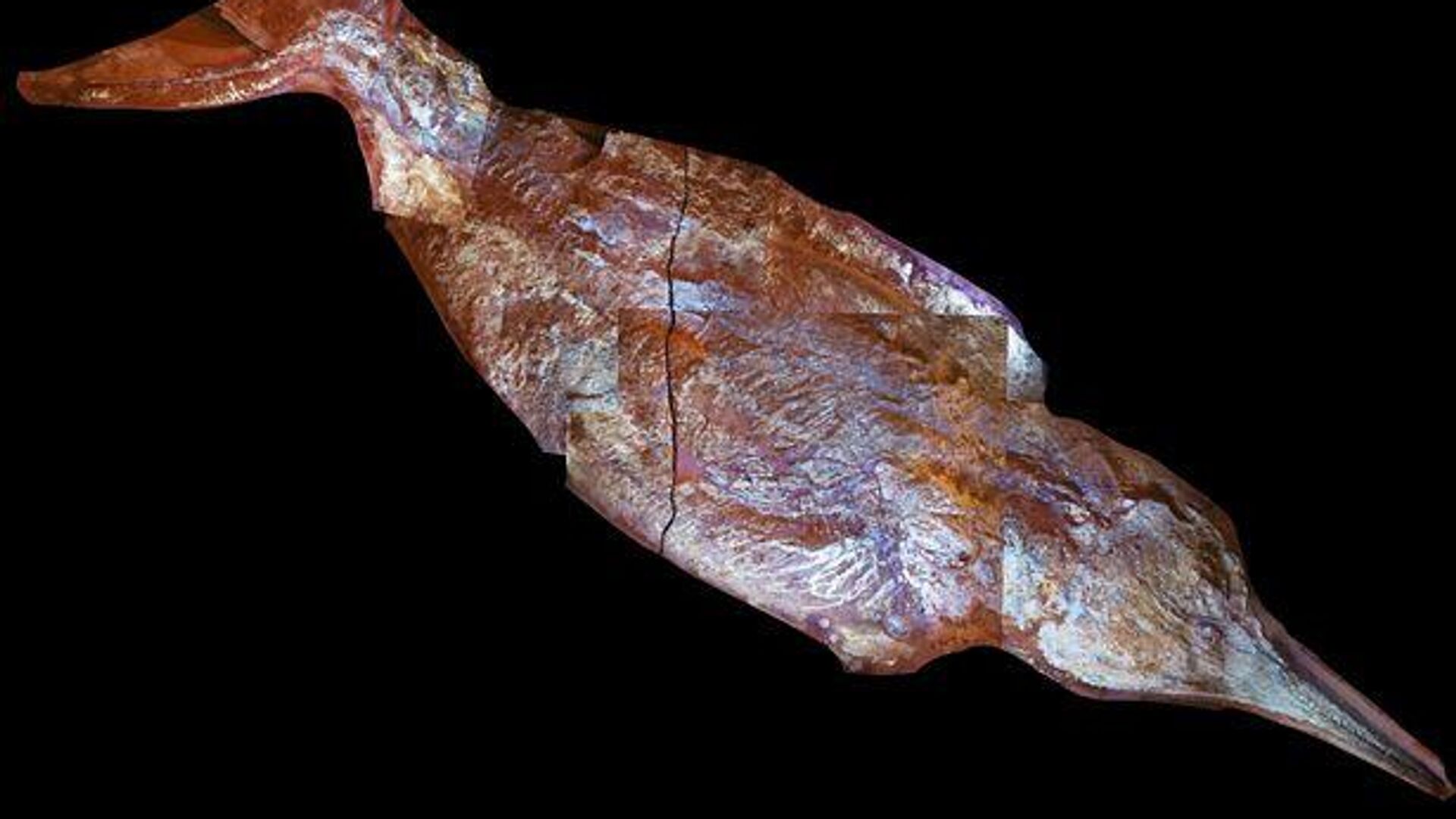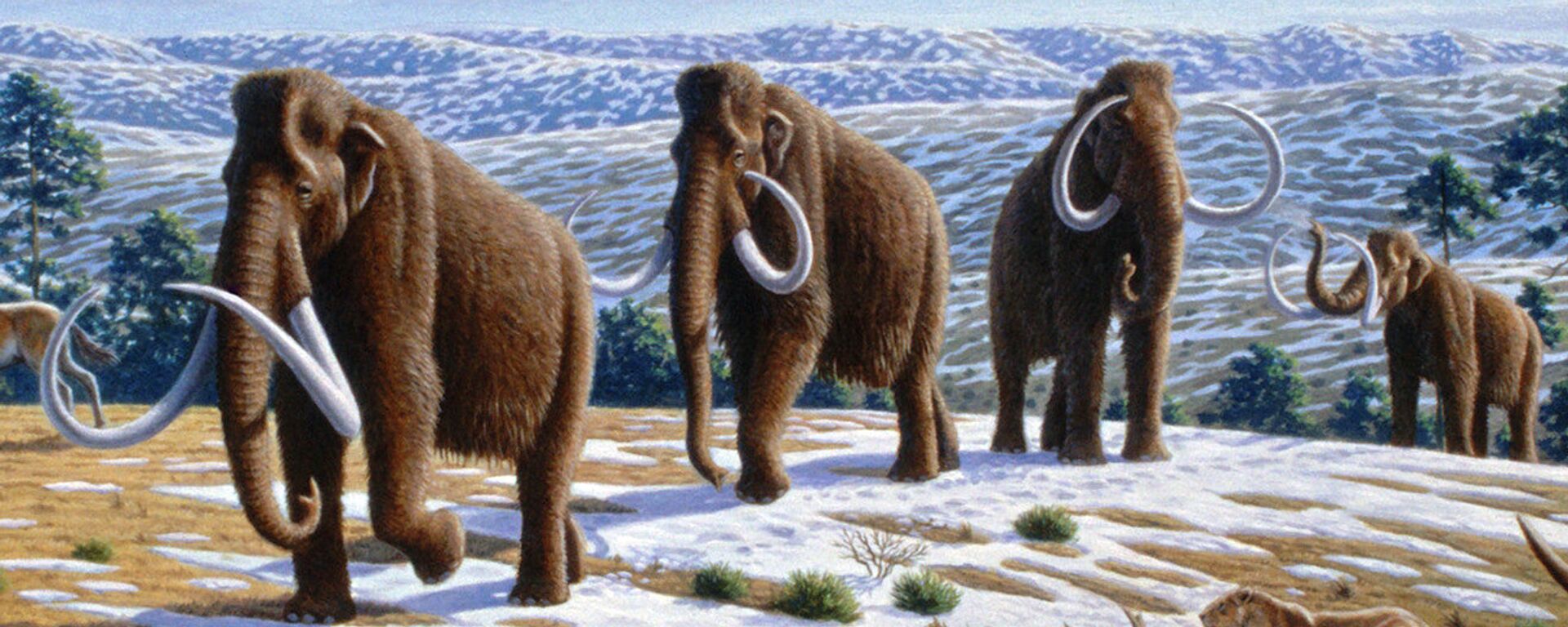https://sputnikglobe.com/20220428/step-aside-blue-whale-scientists-claim-theyve-found-the-remains-of-the-worlds-largest-animal--1095125643.html
Step Aside, Blue Whale: Scientists Claim They've Found the Remains of the World’s Largest Animal
Step Aside, Blue Whale: Scientists Claim They've Found the Remains of the World’s Largest Animal
Sputnik International
Do you know that the blue whale, currently considered to be the biggest creature in the world, has a heart the size of a car? It appears, however, that there... 28.04.2022, Sputnik International
2022-04-28T13:19+0000
2022-04-28T13:19+0000
2022-10-26T12:00+0000
scientists
animal
creature
study
world
https://cdn1.img.sputnikglobe.com/img/07e6/04/1c/1095123015_0:44:615:390_1920x0_80_0_0_2c20cfcf33d825a69049fa61632cf81a.jpg
It seems that while the blue whale may currently be the largest creature on Earth, it can't be called the biggest animal of all time. Scientists have unearthed the remains of an ancient giant ichthyosaur, which they claim could be the largest animal that ever lived on our planet.The huge marine creature was identified from fossils representing three individuals that included massive teeth and vertebrae. The fossils were dug out of rocks at an altitude of more than 9,000 feet (2,700 metres) in the Swiss Alps.But what makes researchers think they've discovered the remains of the world’s largest animal? The answer is the eyebrow-raising size of the creature’s tooth root, which is twice as wide as the record that was previously set by another ichthyosaur, which was a whopping 50 feet (15 metres) from nose to tail.Heinz Furrer, one of the team member and a retired curator at the University of Zurich's Palaeontological Institute and Museum, told The Mirror that he was thrilled with the new discovery.Now it’s worth mentioning that some other incomplete skeletal remains such as the vertebra indicate that the creature dwarfed an ichthyosaur from Canada named Shonisaurus sikanniensis, which was 69 feet (21 metres) long.Martin Sandler, lead author of the study that was published in the Journal of Vertebrate Paleontology, recalled that “there were only three animal groups that had masses greater than 10-20 metric tonnes: long-necked dinosaurs; whales; and the giant ichthyosaurs of the Triassic [geologic period]”.Ichthyosaurs first emerged after the end of the Permian extinction, also known as the “great dying”, which occurred about 250 million years ago and wiped out more than two-thirds of species on land and 96% of marine species.
https://sputnikglobe.com/20220304/back-from-extinction-augmented-reality-gives-a-glimpse-at-ice-age-era-animals-1093595165.html
world
Sputnik International
feedback@sputniknews.com
+74956456601
MIA „Rosiya Segodnya“
2022
Oleg Burunov
https://cdn1.img.sputnikglobe.com/img/07e4/09/0b/1080424846_0:0:2048:2048_100x100_80_0_0_3d7b461f8a98586fa3fe739930816aea.jpg
Oleg Burunov
https://cdn1.img.sputnikglobe.com/img/07e4/09/0b/1080424846_0:0:2048:2048_100x100_80_0_0_3d7b461f8a98586fa3fe739930816aea.jpg
News
en_EN
Sputnik International
feedback@sputniknews.com
+74956456601
MIA „Rosiya Segodnya“
Sputnik International
feedback@sputniknews.com
+74956456601
MIA „Rosiya Segodnya“
Oleg Burunov
https://cdn1.img.sputnikglobe.com/img/07e4/09/0b/1080424846_0:0:2048:2048_100x100_80_0_0_3d7b461f8a98586fa3fe739930816aea.jpg
scientists, animal, creature, study, world
scientists, animal, creature, study, world
Step Aside, Blue Whale: Scientists Claim They've Found the Remains of the World’s Largest Animal
13:19 GMT 28.04.2022 (Updated: 12:00 GMT 26.10.2022) Do you know that the blue whale, currently considered to be the biggest creature in the world, has a heart the size of a car? It appears, however, that there once lived an animal that was even more massive.
It seems that while
the blue whale may currently be the largest creature on Earth, it can't be called the biggest animal of all time. Scientists have unearthed the remains of an ancient giant ichthyosaur, which they claim could be the largest animal that ever lived on our planet.
The huge marine creature was identified from fossils representing three individuals that included massive teeth and vertebrae. The fossils were dug out of rocks at an altitude of more than 9,000 feet (2,700 metres) in the Swiss Alps.
But what makes researchers think they've discovered the remains of the world’s largest animal? The answer is the eyebrow-raising size of the creature’s tooth root, which is twice as wide as the record that was previously set by another ichthyosaur, which was a whopping 50 feet (15 metres) from nose to tail.
Heinz Furrer, one of the team member and a retired curator at the University of Zurich's Palaeontological Institute and Museum, told The Mirror that he was thrilled with the new discovery.
“It's the world’s longest ichthyosaur; with the thickest tooth found to date and the largest trunk vertebra in Europe,” Furrer argued.
Now it’s worth mentioning that some other incomplete skeletal remains such as the vertebra indicate that the creature dwarfed an ichthyosaur from Canada named Shonisaurus sikanniensis, which was 69 feet (21 metres) long.
Martin Sandler, lead author of the study that was published in the Journal of Vertebrate Paleontology, recalled that “there were only three animal groups that had masses greater than 10-20 metric tonnes: long-necked dinosaurs; whales; and the giant ichthyosaurs of the Triassic [geologic period]”.
“It amounts to a major embarrassment for palaeontology that we know so little about these giant ichthyosaurs despite the extraordinary size of their fossils. We hope to rise to this challenge and find new and better fossils soon,” Sandler added.
Ichthyosaurs first emerged after the end of the Permian extinction, also known as the “great dying”, which occurred about 250 million years ago and wiped out more than two-thirds of species on land and 96% of marine species.





